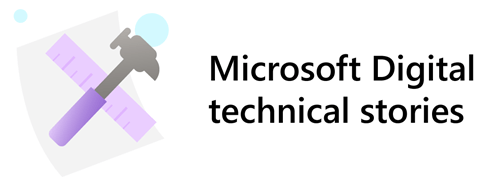
At Microsoft, we’ve rolled out SharePoint Premium across the company, including in Microsoft Digital, the company’s IT organization where we’re using it to transform how the company manages its content.
SharePoint is the backbone of our content management and collaboration strategy. We use it to enable our employees to access, share, and co-create documents across teams and devices for more than 600,000 sites containing 350 million pieces of content and more than 12 petabytes of data. It’s at the core of everything we do, from being the place where individual employees and small teams store and share their work, to being home to our very largest portals, where the entire company comes together to find news and perform important common tasks.
At this scale, we continually face the challenge of ensuring that our content stored in SharePoint is secure, compliant, and easy to find and use.
It’s a big task, according to Stan Liu, senior product manager and knowledge management lead at Microsoft Digital.

“We have a complex environment,” Liu says. “With more than 300,000 users accessing the Microsoft 365 tenant across multiple global regions, a significant amount of content is being created and stored within our SharePoint environment.”
Liu is no stranger to the challenges of managing SharePoint at scale.
“We have several teams creating content and many trying to find content,” he says. “Discoverability is always at the front of our minds and making content easy to find requires time and effort in SharePoint.”
Liu’s team is focused on making content management as simple and effective as possible for Microsoft employees. SharePoint users at Microsoft Digital perform many manual tasks to keep SharePoint content secure, compliant, and easy to find and use. They apply their efforts to provide better governance over constantly increasing digital content, prevent accidental sharing, and effectively manage the content lifecycle.
At this scale, with the challenges of discoverability and manual effort clearly in focus, Liu’s team has turned to SharePoint Premium to meet these challenges and prepare Microsoft Digital for the next generation of content management and usage scenarios.
Discovering, automating, and more with SharePoint Premium
SharePoint Premium uses the power of Microsoft Azure Cognitive Services and the Microsoft Power Platform to bring AI, automation, and added security to content experiences, processing, and governance to SharePoint. It delivers new ways to engage with our most critical content, managing and protecting it through its lifecycle.
AI is at the root of the SharePoint Premium feature set, enhancing productivity and collaboration. AI-driven search provides personalized and relevant search results by understanding user intent and context. AI-powered insights help users discover patterns and trends in their data, enabling more informed decision-making. AI-automated workflows and content management streamline processes, while AI-infused advanced security measures ensure data protection.
SharePoint Premium includes a large set of services, including:
- Autofill columns. Autofill columns use large language models to automatically pull, condense, or create content from files in a SharePoint document library. This feature allows selected columns to store metadata without manual input, simplifying file management and data organization.
- Content assembly. Content assembly automates the creation of routine business documents, including contracts, statements of work, service agreements, consent letters, and other types of correspondence.
- Document processing. Using prebuilt, structured, unstructured, and freeform document processing models, SharePoint Premium can extract information from many document types, such as contracts, invoices, and receipts. It can also detect and extract sensitive information from documents.
- Image tagging. Image tagging helps users find and manage images in SharePoint document libraries. The image-tagging service automatically tags images with descriptive keywords using AI. These keywords are stored in a managed metadata column, making it easier to search, sort, filter, and manage the images.
- Taxonomy tagging. Taxonomy tagging helps users find and manage terms in SharePoint document libraries. SharePoint Premium uses AI to automatically tag documents with terms or term sets configured in the taxonomy store. These terms and sets are stored in a managed metadata column, making documents easier to search, sort, filter, and manage.
- Document translation. SharePoint Premium can create a translated copy of a document or video transcript in a SharePoint document library while preserving the file’s original format and structure.
- SharePoint eSignature. SharePoint eSignature facilitates the sending of electronic signature requests, ensuring documents remain within Microsoft 365 during the review and signing process. eSignature can efficiently and securely dispatch documents to be signed by individuals within or outside the organization.
- Optical character recognition. The optical character recognition (OCR) service extracts printed or handwritten text from images. SharePoint Premium automatically scans the image files, extracts the relevant text, and makes the text from the images available for search and indexing. This enables quick and accurate location of key phrases and terms.
“SharePoint Premium is really built around discovery and automation, with a huge emphasis on AI to help perform tasks efficiently at scale,” says Sean Squires, a principal product manager in the OneDrive and SharePoint Product Group. “We need that granular control and understanding of how our content and intellectual property is represented, shared, and used.”
Creating a culture of content management
There’s also a cultural element that’s critical to the team’s work.
“SharePoint Premium represents a shift in how Microsoft Digital approaches content management, not just as a new technology but as a new way of working,” Liu says. “It’s about integrating AI capabilities into daily practices to automate mundane tasks like tagging content, making it more discoverable, and keeping it up to date. This integration aims to make content management a part of daily habits and routines, ensuring content remains relevant and useful.”
Liu highlights the importance of making content management a daily habit and how AI can simplify the process. He recognizes the need for a cultural shift to incentivize active participation in content management. It’s also important to measure the impact of content contributions on others. The goal is to make content management processes, such as classifying content, a regular practice to ensure high-quality content within the enterprise.
Part of the cultural shift is in how we think about SharePoint itself. Moving from “site-centric” to “document-centric” usage of SharePoint signifies a strategic shift in how we manage SharePoint content at Microsoft Digital. Metadata and content context are critical to ensuring our content is easy to find and relevant, and we’re leaning on SharePoint Premium features to help us do that. Incentivizing active participation in content management and making it a daily habit for our employees is critical to a wider and more consistent realization of the benefits provided by SharePoint Premium across the organization.
“How do we find ways to make things easier without somebody having to do anything?” asks Ray Peer, a senior product manager in Microsoft Digital. “That’s where we’re using the SharePoint Premium AI capabilities to help with things like automatic processing and auto-tagging. These are mundane tasks that people don’t like to do. So instead of just forcing change on the culture, we’re finding ways to make it easier for the culture to change.”
Microsoft Digital has already seen huge successes in making it easier for the culture to change with SharePoint Premium.
The Microsoft Cloud Operations & Innovation Finance team experienced several issues in accurately tracking and managing their invoices. In certain situations, the team found it difficult to find unpaid invoices or uncover missing information in invoices. These issues made it more difficult to keep track of payments and created delays in locating invoices.
To address these issues, they created a SharePoint site dedicated to invoice management for the finance team. It used the prebuilt SharePoint Premium document processing models to automatically extract important data from invoices uploaded to the document library, including PO numbers, dates, amounts, and client information. They added column metadata to track payment status and applied conditional formatting and highlighting to categorize invoices and draw attention to missing information in invoice fields.
It’s a perfect example of how an AI-driven feature like document processing in SharePoint Premium can radically transform a business process within a simple SharePoint document library. The solution reduced costs, decreased processing times, improved accuracy, and enabled better compliance for the Microsoft Cloud Operations & Innovation Finance team.
Peer reiterates that solutions like this have a way of gaining momentum in the organization.
“This solution quickly came to the attention of other finance-based departments within Microsoft,” Peer says. “Other managers wanted the same benefits and asked for the same solution. It was easy to replicate, and suddenly, those benefits were multiplied across the company.”
It’s not an isolated situation. Many other business groups have similar stories.
The Microsoft Partner Incentive Operations team sends hundreds of letters to Microsoft partners daily using a set of Microsoft Word templates. IT staff created the templates manually and updated them manually when necessary. On average, it took 75 minutes to create a template and 30 minutes to review each letter and send it to a partner organization.
To improve efficiency, they implemented a new letter generation process for partner letters based on the SharePoint Premium Content Assembly service. They created a SharePoint modern template document for the letter types they used and integrated the templates with data sourced from internal systems containing relevant information customized for each partner, by market, region and sales offer type.
The new solution created a flexible method for creating partner letters with dynamic placeholders in the document and multiple letter formats, including text, tables, and conditional sections, all driven by a self-serve UI. Letter creators could completely automate the letter creation process without any manual intervention.
The new solution created more consistent partner letter results, and the automated process saved the team more than 6,000 hours per year in manual template creation and refresh tasks, leading to a 30% increase in business agility and a decrease in time-to-market.
Integrating Microsoft 365 Copilot with AI
Microsoft 365 Copilot integrates seamlessly with SharePoint Premium to enhance its capabilities, particularly in automation and AI. The content AI and intelligent document processing built into SharePoint Premium use advanced machine learning models to classify content, organize it, extract relevant information, and automate workflows at scale. The improvements in metadata and content quality directly improve the performance and results in Copilot.
Copilot complements SharePoint Premium by using large language models to assist with document creation, Q&A, and running complex queries. It can help find specific documents based on criteria and automate tasks like translations or routing documents to appropriate teams. The integration aims to democratize the ability to configure complex machine learning models, making it easier for users to apply them to their content and achieve significant productivity gains.
The symbiotic relationship between Copilot and SharePoint Premium is particularly evident in their shared goal of automating content processing. For example, SharePoint Premium can automatically tag documents with metadata, which Copilot can then use to perform more robust queries and assist with organizing content. This collaboration represents a step towards a future where sophisticated AI-driven workflows are accessible to all users, enhancing productivity and efficiency across the organization.
It’s a vision that’s already becoming a reality at Microsoft Digital.
Looking forward
We’re anticipating a near future where AI-based content management capabilities and automation fully intersect with large language models and language understanding services to create a sophisticated combination of intelligence and automation.
“We can easily envision the capability to perform a set of complex tasks over complex content with a single prompt,” Squires says. “I might ask Microsoft 365 Copilot to find all invoices for the Fabrikam company worth more than $10,000 from 2023 and send copies of those invoices to my finance manager. SharePoint Premium is putting that future within reach at Microsoft Digital, and that’s exciting.”
Microsoft Digital will continue to invest in SharePoint Premium capabilities across the organization and work with the product group as Customer Zero, growing SharePoint Premium features to push the boundaries of what’s capable with AI-powered content management.

Here are a few takeaways that can help you get started with SharePoint Premium in your organization:
- Explore the different Content AI services that SharePoint Premium offers, such as autofill columns, content assembly, document processing, image tagging, taxonomy tagging, document translation, eSignature, and optical character recognition.
- Identify the business processes and scenarios in your organization that could benefit from AI-driven content management and automation, such as invoice tracking, partner or customer correspondence, document creation, and content discovery.
- Learn how to configure and use SharePoint Premium features in your SharePoint document libraries, such as creating and applying metadata columns, setting up content assembly templates, enabling document processing models, and using image and taxonomy tagging.
- Integrate Microsoft 365 Copilot with SharePoint Premium to enhance your content experiences and workflows, such as querying for specific documents, translating content, routing documents to appropriate teams, and creating documents with natural language prompts.








